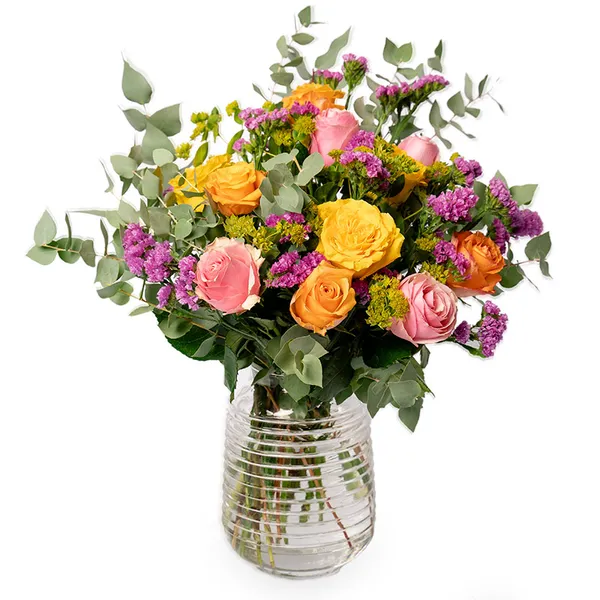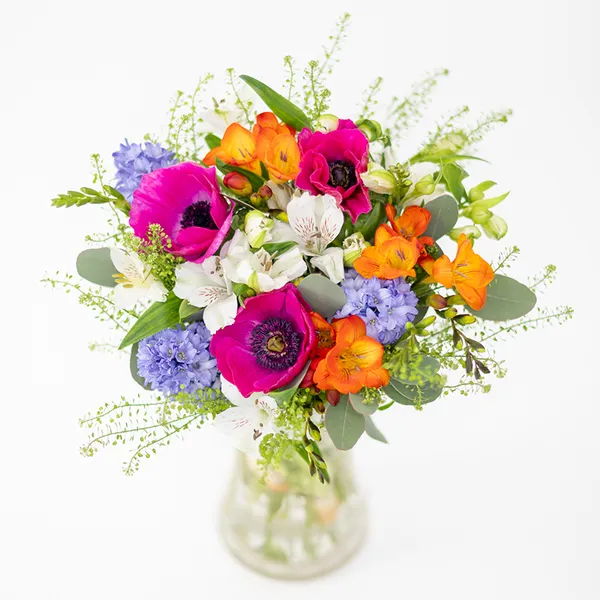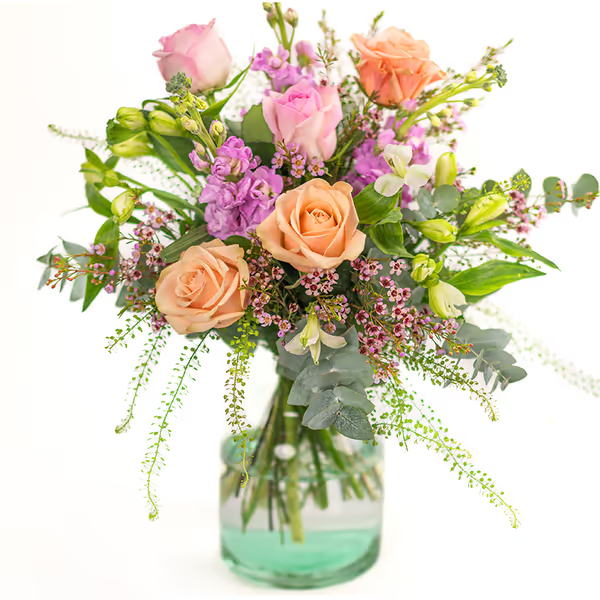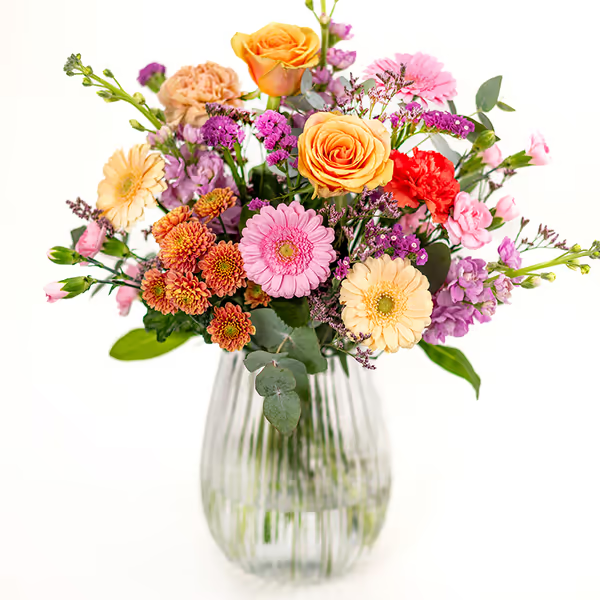Eucalyptus: The Elegant Evergreen with a Calming Spirit
Eucalyptus is a versatile and aromatic foliage plant prized for its soft, silver-green leaves, soothing fragrance, and long-lasting beauty in both fresh and dried arrangements. Native to Australia, eucalyptus belongs to the myrtle family (Myrtaceae) and is now grown worldwide for its ornamental, medicinal, and aromatic uses. In floristry, eucalyptus symbolises protection, healing, purification, and renewal. Its graceful shape and muted tones add elegance and texture to bouquets, wreaths, and natural decorations.
COMMON NAME
Eucalyptus
BOTANICAL NAME
Eucalyptus spp.
ORIGIN
Australia
PEOPLE ALSO CALL IT
Gum tree
FLOWERING TIME
All year round (best foliage in autumn/winter)
ASPECT
Full sun, well-drained soil
SYMBOLISM
Healing, protection, purification, renewal
Care Tips for Cut Eucalyptus in a Vase
Trim stems at an angle: Improves water uptake and prevents blockage.
Change water regularly: Every 2-3 days to maintain freshness and reduce bacteria.
Combine with other flowers or use solo: Adds shape, movement, and scent to any arrangement.
Let it dry naturally: Eucalyptus dries beautifully—retain colour, fragrance, and form when hung upside down.
Add to showers: Hung in the bathroom, it releases calming vapours in warm steam.
Care Tips for Eucalyptus Trees in a Pot or Garden
Light: Needs full sun to grow well.
Watering: Water young plants regularly; established trees tolerate drought.
Soil: Prefers well-draining, sandy soil.
Pruning: Prune regularly to maintain shape or encourage bushy growth.
Container growth: Choose dwarf or compact varieties for pots and prune to control size.
Symbolism & Meaning
Eucalyptus represents cleansing, protection, and strength. Its healing scent and antimicrobial properties have made it a symbol of health, recovery, and emotional balance. In spiritual and holistic practices, eucalyptus is often used to purify spaces and protect against negative energy. As a gift, it’s associated with fresh starts, peaceful energy, and resilience—perfect for get-well wishes or housewarmings.
Types of Eucalyptus Used in Floristry
There are over 700 species of eucalyptus, but these are the most common in floral design:
- Eucalyptus cinerea (Silver Dollar) – Round, silvery leaves with strong scent; popular in bouquets and wreaths.
- Eucalyptus populnea (Populus) – Large, broad leaves; elegant and soft in romantic designs.
- Eucalyptus gunnii (Cider Gum) – Blue-grey leaves with a sweet fragrance; great for both fresh and dried use.
- Eucalyptus nicholii (Willow Leaf) – Long, narrow leaves that add movement and airiness.
Whether fresh or dried, eucalyptus brings grace, fragrance, and natural elegance to every arrangement or space. 🌿💚
Frequently Asked Questions About Eucalyptus
Yes, eucalyptus (especially the essential oil) is toxic to dogs. If ingested, it can cause vomiting, weakness, drooling, and diarrhoea. Keep fresh or dried eucalyptus out of reach of pets.
Yes, eucalyptus is also toxic to cats, especially the oil. Ingestion can lead to digestive issues, drooling, tremors, or worse. Avoid using eucalyptus near your cat’s sleeping or feeding area.
Eucalyptus oil is used for clearing blocked noses, relieving coughs, muscle pain relief, and as a natural insect repellent. It’s common in aromatherapy, balms, and cleaning products.
Hang fresh stems upside down in a dry, dark, and well-ventilated space for about 2-3 weeks. The leaves will dry beautifully and keep their scent. No need for additives.
Prune in late winter or early spring, before new growth starts. Young plants can also be pruned in summer to shape them. Always use clean, sharp tools.
Use well-draining, light soil – a mix of potting compost, sand, and a bit of grit works well. Eucalyptus hates soggy roots.
Eucalyptus grows very quickly, especially in warm, sunny spots. Some species can grow up to 1–2 metres per year under good conditions.
Pair eucalyptus with lavender, rosemary, grasses, or succulents – all prefer similar dry, sunny conditions. Choose companions that won’t compete for space.
In the ground, eucalyptus can grow 10–30 metres tall, depending on the species. In pots, growth is limited – usually 1–3 metres, if regularly pruned.
Water regularly in the first year, then only when the soil is dry to the touch. Eucalyptus is drought-tolerant once established, but don’t let it dry out completely in a pot.
Yes, eucalyptus is an evergreen plant, keeping its leaves year-round – even in winter. That’s part of its appeal in gardens and floral arrangements.
Eucalyptus has a fresh, minty-camphor scent that’s sharp, clean, and invigorating. It’s widely used for clearing sinuses and in relaxing aromatherapy.
Yes, in large amounts eucalyptus leaves and oils are toxic to humans and animals. Never consume it unless it’s a controlled medicinal dose, and always keep eucalyptus products away from pets and children.




